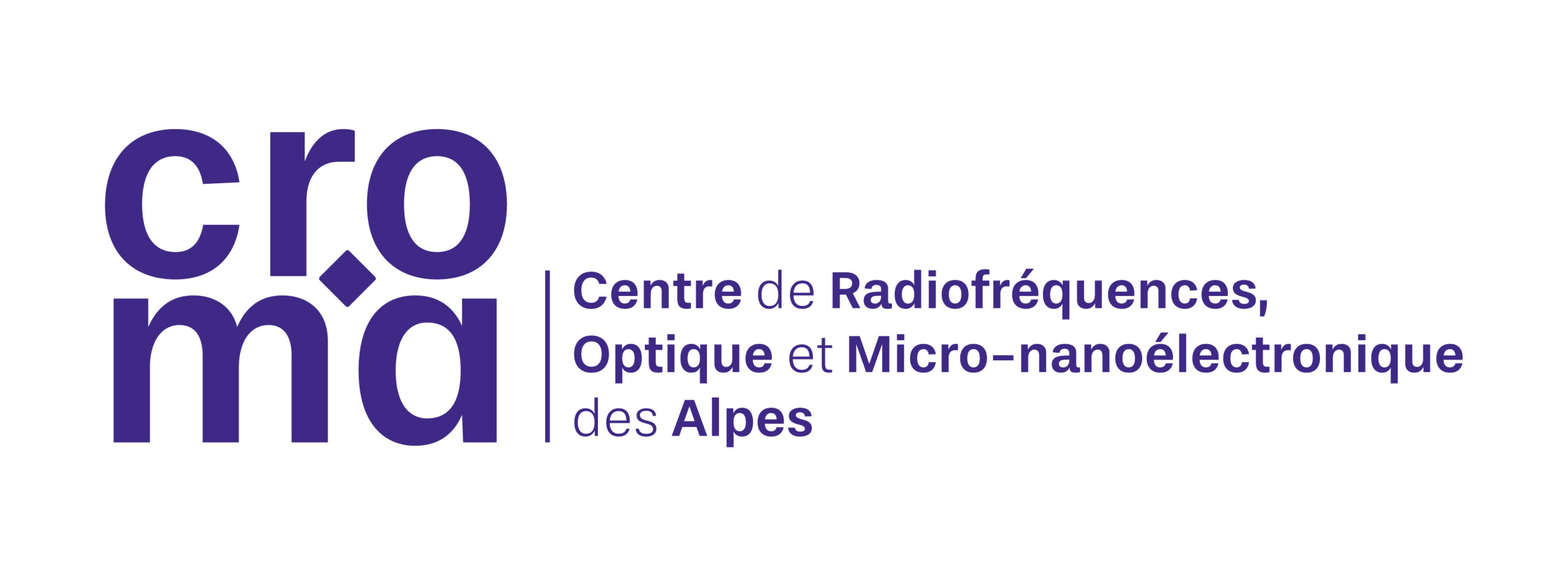EXACT-HF: EXtraction de paramètres Assistée par intelligence artificielle pour des CaracTérisations de matériaux en Hautes Fréquences
Publié le : 29 octobre 2025
 CROMA Site Chambéry
CROMA Site Chambéry
Université Savoie Mont Blanc, Rue Lac de la Thuile Bat. 21
73370 Le Bourget du Lac Cedex – France
EXACT-HF : EXtraction de paramètres Assistée par intelligence artificielle pour des CaracTérisations de matériaux en Hautes Fréquences
Context:
As part of the CHAMOIS project, in partnership with the company STMicroelectronics, we are seeking to automate the extraction of dielectric parameters from microwave measurements for materials characterization. The electrical characterization of materials at hyperfrequencies is essential for understanding their intrinsic electronic structure and charge carrier dynamics. Permittivity and dielectric losses are a major concern in this field, as they directly impact signal integrity and propagation within high-speed electronic systems. Due to the stringent requirements of advanced System-on-Chip (SoC) and System-in-Package (SiP) technologies, in situ measurements are necessary, as manufacturing processes (ie solvent deposition, drying, and polishing) can significantly alter the electrical properties of materials, thereby affecting the overall performance of interconnects operating at frequencies from 8 to 20 GHz. Conventional methods typically involve two stages: first, measuring the S-parameters of the structures using a Vector Network Analyzer (VNA), followed by solving the inverse problem through back-simulation (Houzet, 2021). The latter step is computationally intensive, often relying on simulation through finite element methods (such as Ansys HFSS) to address our specific challenges. Conducting such instrumentation remains a significant scientific challenge, particularly due to the high computational effort required and the lack of automation in such a method.
Integrating AI-driven instrumentation could streamline the process, reduce computational load and enhancing the efficiency of inverse problem-solving. A new hardware design is emerging from neural networks implementation with electronic circuits, often named edge AI. Artificial Neural Networks (ANNs) are computational models designed for real-time computing for applications such as classification of material samples through their data characteristics. Spiking Neural Networks (SNNs), also referred to as the third generation of ANNs, are emergent devices who effectively bridge the gap between ANNs and natural intelligence in low-power devices (Shrestha, 2022). This enables the implementation of AI solutions in-situ, ie as close as possible to the material under test. The implementation of SNNs is performed on neuromorphic processors such as Truenorth (DeBole, 2019), SpiNNaker (Furber, 2014), and Loihi (Orchard, 2021). These solutions fully exploit the sparsity of events and offer remarkable efficiency. However, neuromorphic chips cannot still be considered mainstream in the market, due to costs and availability. A low-cost, low-power solution is found on hardware-friendly neural networks in micro-controllers such as TinyOL (Ren, 2021), TinyTL (Cai, 2020), and MCUNet (Lin, 2020).
Objective:
The main goal of EXACT-HF is to accurately characterize the complex permittivity of materials using edge-AI solutions for real-time computing. This is approached through a two-stage methodology:
- a. Extraction method using transmission lines (e.g., CPW, CPWG, CPS) is employed on materials with known properties to build a database of measurement data. By varying transmission line types on the same material, we can create a robust dataset suitable for training a neural network, enabling automated and efficient material characterization.
- b. Transform an AI model into a hardware-friendly model. Flexibility, surface area, latency, memory consumption, energy efficiency, and reliability are addressed by this study. An STM32 (NUCLEO-N657X0-Q) and an FPGA (ICE40UP5K-B-EVN) implementation should be investigated.
Keywords:
microwave instrumentation, convolutional neural networks, edge-AI, IoT.
Project Supervision:
CROMA laboratory is represented by Gregory HOUZET, Associate Professor at Université de Savoie Mont Blanc, and Pietro M. FERREIRA, Full Professor at Université de Savoie Mont Blanc. Prof. HOUZET has a research interest in materials science, microwaves, and applied physics. Prof. FERREIRA has a research interest in microwave instrumentation, neuromorphic circuits, and ultra-low power solutions. Candidate will be to the tools and scientific methods of the research topic. Practical activities and real-world scenarios are planned, including microwave measurements, scientific writing, communication and public speaking, result quality, time management, and research project management.
Candidate Profile:
The candidate profile required for the project is a young professional pursing a master’s degree in Eletrical or Electronics Engineering, interested in the scientific field of embedded electronics, microwave, and AI. He/She must be motivated, passionate about research in a multidisciplinary field and an organized person using scientific methods. He/She must justify good academic tracks in maths and applied physics; an experience in design flow; linguistic competence in English (B2 written and spoken); linguistic competence in French is a plus.
Intellectual Property:
Being fundamental scientific research, this subject is not attached to any industrial project. Intellectual property will be promoted through scientific communications favoring the open science policy of the French government.
Bibliography:
10.1016/j.mejo.2021.104990,
10.1109/MCAS.2022.3166331,
10.1109/MC.2019.2903009, 10.1109/JPROC.2014.2304638,
10.1109/SiPS52927.2021.00053,
10.1109/IJCNN52387.2021.9533927,
https://dl.acm.org/doi/abs/10.5555/3495724.3496671,
https://dl.acm.org/doi/abs/10.5555/3495724.3496706.




 Contactez-nous
Contactez-nous Plan d’accès
Plan d’accès









